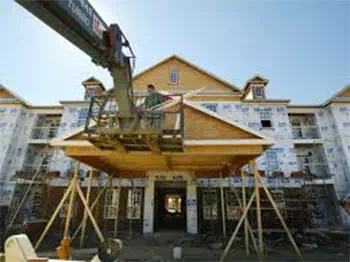 |
||
- Regulated Medical Waste
- Hazardous Materials
- Hazardous Waste
- Pharmaceutical Waste
- Regulations
- Waste Reduction
- Facilities Management
- Assisted Living /
Nursing Homes - Dental Offices
- Search
- Contact
- Home
|
Construction Activities
This section of HERC provides an overview of EPA regulations that may impact construction activities at assisted living/nursing home communities. Numerous links are provided to further investigate federal and state regulations and to locate guidance documents and points of contact. Construction Many construction projects, including new buildings and parking lots, disturb the surface of land. When precipitation occurs, stormwater runoff from these sites can have a significant impact on water quality by contributing sediment and other pollutants to creeks, streams, lakes, etc. Under the Federal Clean Water Act, EPA's National Pollutant Discharge Elimination System (NPDES) permit program controls water pollution by regulating sources of pollution, including runoff from construction sites. EPA's stormwater program requires construction site operators engaged in clearing, grading, and excavating activities that disturb one acre or more to obtain coverage under an NPDES permit for their stormwater discharges. For more information, see:
If your construction project includes installation of new plumbing fixtures, be aware that a revised EPA standard for "lead free" pipes, plumbing fixtures, plumbing fittings, solder and flux, went into effect in 2014 as a result of the Reduction of Lead in Drinking Water Act. The new rule requires that "lead free" plumbing fixtures be used in public water systems and in plumbing that carries water for human consumption in residential and non-residential facilities. For more information, see:
Building Renovation Many renovation projects involve demolition or modification of existing construction. In such cases, you may find existing building materials present that are regulated when they are encountered and/or removed. The most common issues are:
|
